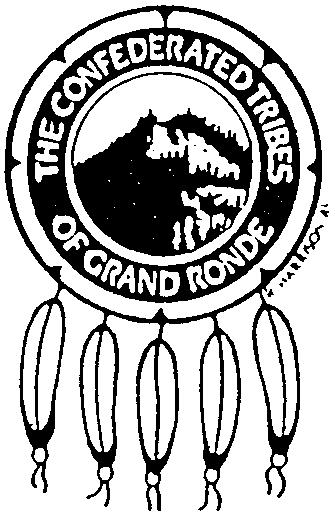

Resolution No. 055-94
WHEREAS, the Grand Ronde Tribal Council, pursuant to Article III, Section I of the Tribal Constitution approved November 30, 1984 by the Acting Deputy Assistant Secretary of the Interior, Indian Affairs, is empowered to exercise all legislative and executive authority not specifically vested in the General Council of the Confederated Tribes of the Grand Ronde Community of Oregon; and,
WHEREAS, the Council believes it is in the best interests of the Tribe to adopt an Environmental Protection Ordinance which would protect and preserve the natural resources of the Grand Ronde Reservation; and
WHEREAS, a draft Ordinance has been reviewed by the Tribal Laws Working Group and found to be adequate for the protection of natural resources on the Reservation; and
WHEREAS, the Council has reviewed the draft Ordinance and agrees that the Ordinance should be adopted.
NOW THEREFORE BE IT RESOLVED, that the Council hereby adopts the Environmental Protection Ordinance as recommended by the Tribal Laws Working Group.
CERTIFICATION: The Tribal Council for the Confederated Tribes of the Grand Ronde Community of Oregon adopted this resolution at a regularly scheduled meeting, with a quorum present as required by the Grand Ronde Constitution held on August 17, 1993, by a vote of 7 yes, 0 no, and 0 abstentions.
______________________________
Mark Mercier, Tribal Chairman
______________________________
Candy Robertson, Secretary
Purpose: To establish a policy which protects the environment of the Tribe's Reservation for present and future generations; that protects and conserves endangered and threatened fish, wildlife and plant species; to establish a procedure for reviewing proposals that may adversely affect endangered and threatened fish, wildlife and plant species; and to protect the public health, safety, welfare, economy, environment and natural resources of the Tribe and the Reservation.
(c) Guidelines: The Council authorizes and directs to the fullest extent possible that the policies, regulations, and laws of the Tribe shall be interpreted and administered in accordance with this Ordinance; and all Tribal agencies shall include a detailed Environmental Impact Statement (EIS) in every recommendation or proposal significantly affecting the quality of the environment. The EIS shall include:
(d) Analysis of Significant Environmental Impacts:
(e) Conditions or Denial of Action: The policies an goals in this Ordinance are supplemental to those in existing legal authorizations of all Tribal departments or agencies. Any action may be conditional or denied, provided, that in order to deny a proposal, an agency must find:
(f) Guidelines for Tribal Agencies: The Council authorizes and directs that to the fullest extent possible, the policies, regulations and laws of the Tribe shall be interpreted and administered as set forth herein; and that all Tribal agencies shall include in every recommendation or report on proposals for legislation and major actions significantly and adversely affecting Protected Species, a Protected Species Impact Statement (PSIS). This statement shall include:
(g) Analysis of Significant Impacts on Protected Species
(i) Ordinance Supplemental to Other Tribal Law - Conditions or Denial of Action: These policies and goals are supplemental to existing Tribal law. Any action may be conditioned or denied, provided, that in order to deny a proposal it must be found that:
(k) Decisions to be Accorded Substantial Weight: In actions involving judicial review on a decision of a Tribal agency, the decision of the Agency shall be given substantial weight.
(l) Rules: The Council shall, at its discretion:
(m) Actions During State of Emergency Exempt: This Ordinance does not apply to actions authorized by the Council or its designee during a state of emergency declared by the Council.
(n) Severability: If a court of competent jurisdiction finds any provision of this Ordinance to be invalid or illegal under applicable federal or tribal law, such provision shall be severed from this Ordinance. The remainder of this Ordinance shall remain in full force and effect.
I certify this to be a true copy of the Confederated Tribes of the Grand Ronde Community of Oregon Environmental Protection Ordinance.
____________________________
Tribal Council Secretary